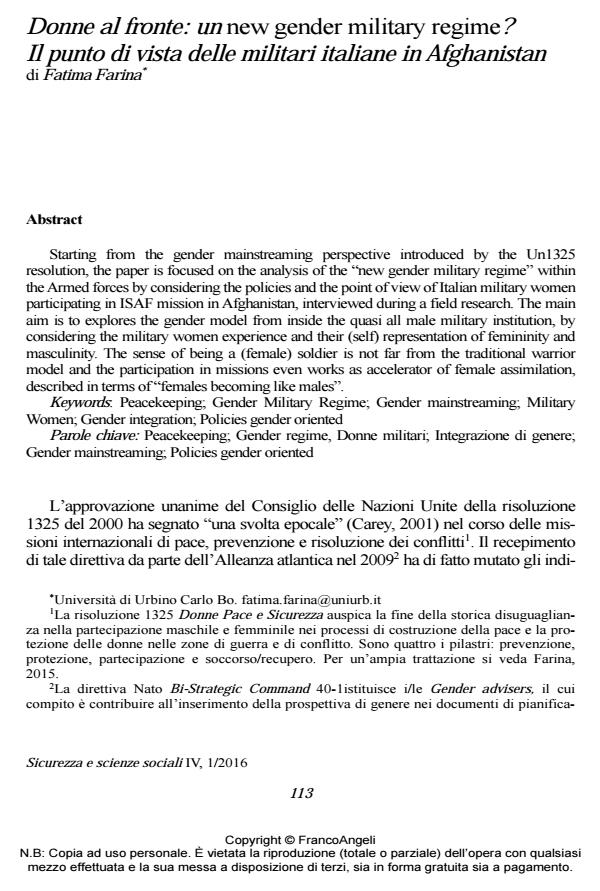Donne al fronte: un new gender military regime? Il punto di vista delle militari italiane in Afghanistan
Journal title SICUREZZA E SCIENZE SOCIALI
Author/s Fatima Farina
Publishing Year 2016 Issue 2016/1
Language Italian Pages 15 P. 113-127 File size 202 KB
DOI 10.3280/SISS2016-001008
DOI is like a bar code for intellectual property: to have more infomation
click here
Below, you can see the article first page
If you want to buy this article in PDF format, you can do it, following the instructions to buy download credits

FrancoAngeli is member of Publishers International Linking Association, Inc (PILA), a not-for-profit association which run the CrossRef service enabling links to and from online scholarly content.
Starting from the gender mainstreaming perspective introduced by the Un1325 resolution, the paper is focused on the analysis of the "new gender military regime" within the Armed forces by considering the policies and the point of view of Italian military women participating in ISAF mission in Afghanistan, interviewed during a field research. The main aim is to explores the gender model from inside the quasi all male military institution, by considering the military women experience and their (self) representation of femininity and masculinity. The sense of being a (female) soldier is not far from the traditional warrior model and the participation in missions even works as accelerator of female assimilation, described in terms of "females becoming like males".
Keywords: Peacekeeping; Gender Military Regime; Gender mainstreaming; Military Women; Gender integration; Policies gender oriented
Fatima Farina, Donne al fronte: un new gender military regime? Il punto di vista delle militari italiane in Afghanistan in "SICUREZZA E SCIENZE SOCIALI" 1/2016, pp 113-127, DOI: 10.3280/SISS2016-001008